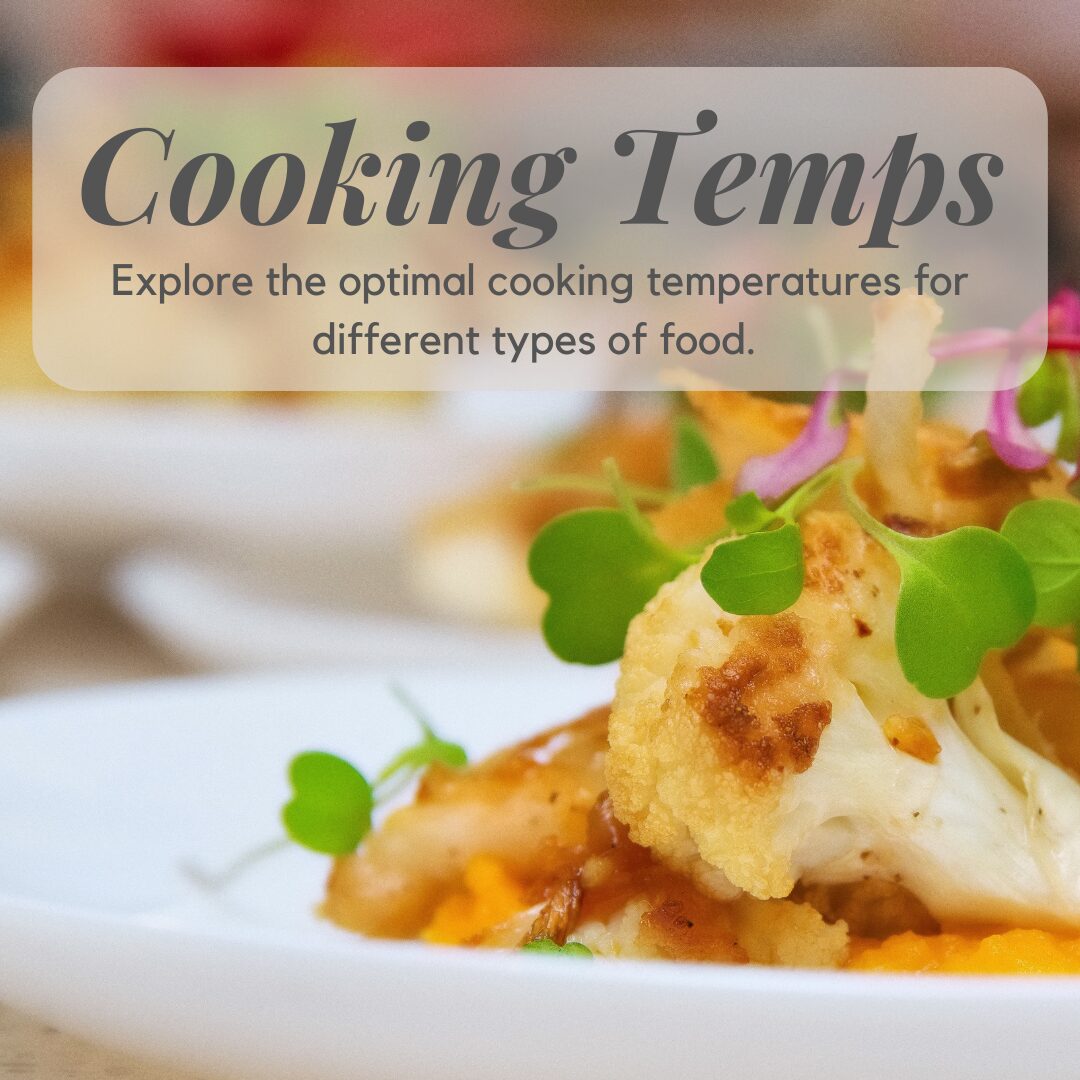Cooking Temperature Safety Guide

Last Updated on: 18th March 2025, 11:36 am
Understanding Cooking Temperatures
Welcome back to Your Ultimate Culinary Guide! In this section, we'll explore the optimal cooking temperatures for various foods. Knowing these temperatures is essential to ensuring food safety.
Safe Cooking Temperatures:
- Leftovers (Any type) - 165°F. Always reheat leftovers to this temperature to kill any harmful bacteria.
- Fresh Meats (Beef, Veal, Lamb) - 145°F. This temperature ensures juicy, flavorful meat while keeping it safe.
- Ground Meats (Beef, Pork, Veal, Lamb) - 160°F. This ensures your ground meats are fully cooked and free of harmful bacteria.
- Ground Meats (Turkey, Chicken) - 165°F. Cooking poultry to this temperature prevents foodborne illnesses.
- Poultry - 165°F. Chicken and turkey must be fully cooked to avoid any risk of salmonella contamination.
- Pork - 145°F. This temperature keeps pork tender while ensuring it is safe to eat.
- Seafood - 145°F. Perfectly cooked seafood should be firm and opaque throughout.
Understanding the Temperature Danger Zone
The Temperature Danger Zone (TDZ) is a critical concept in food safety. Bacteria multiply rapidly between 41°F and 135°F, making it essential to keep food out of this temperature range to prevent foodborne illness.
Key Points about the Temperature Danger Zone:
- Danger Zone: 41°F - 135°F: Bacteria thrive in this temperature range. They can double in as little as 20 minutes.
- Avoid Leaving Food in the Danger Zone:Never leave food out of refrigeration for more than 2 hours to reduce bacterial contamination risks.
- Practice Safe Food Handling: Properly store, cook, and chill food to keep it safe for consumption.
Implementing Safe Cooking Practices:
- Use a Food Thermometer: A reliable thermometer helps you measure the internal temperature of food precisely.
- Follow Recommended Guidelines: Check the recommended cooking temperatures for various foods to ensure safety.
- Monitor Cooking Times: Keep track of how long food spends in the TDZ to minimize bacterial growth.
- Store Food Properly: Refrigerate perishable items quickly and at the right temperature to maintain freshness and safety.
Happy Learning, Happy Cooking!
Now that you understand cooking temperatures and food safety, you can confidently prepare delicious and safe meals for yourself and your loved ones.
Bon Appétit,
Chef Abyssinia
